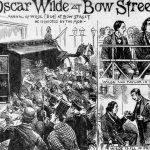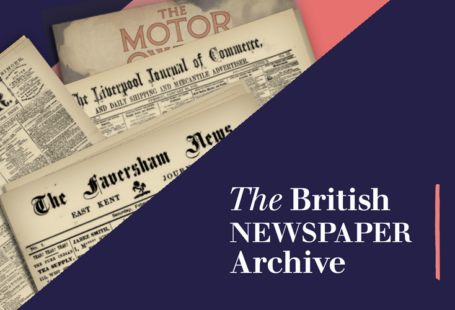This week at The Archive we are delighted to announce the addition of nearly 200,000 brand new pages, having added 198,676 new pages in the last seven days. We have updated five of our English titles, spanning the north west and south west of the country, as well as one national title. Meanwhile, our other updated title hails from north of the border, coming from Dundee.
Register now and explore the Archive
Moreover, this week sees an incredible breadth of historical coverage in our updated pages. From the early days of newspaper production in the eighteenth century, right up until the modern day, our new pages this week span nearly 250 years between 1747 and 1991.
These new pages from the eighteenth century come from historic Chester title the Chester Courant. Began in 1732 as Adams’s Weekly Courant by printer Roger Adams, it set itself up as a rival to Chester’s first ever newspaper, the Chester Weekly Journal. After Adams died in 1741, control of the newspaper passed to his wife Elizabeth, and thence to his daughter Dorothy and her husband William Monk.
Chester Courant, then published as Adams’s Weekly Courant | 10 March 1747
Monk had been Adams’s former apprentice, whilst in 1793 the newspaper changed its name to the Chester Courant. The Chester Courant stayed in the Monk family until 1832, when John Dixon became its proprietor, which led to the newspaper being modernised, and its price being reduced.
From its inception in the eighteenth century, the Chester Courant was known as being ‘vigorously Tory,’ and during the nineteenth century the newspaper continued to print Conservative editorials. The last edition of the Chester Courant was printed in 1984, meaning that the paper had been in existence for well over two hundred years.
Chester Courant | 16 November 1898
We have added further pages to other titles from the north west this week, including the Crewe Chronicle and the Manchester Evening News. The Crewe Chronicle first appeared on 21 March 1874, as a Radical alternative to the Tory-biased Crewe Guardian. Meanwhile, the Manchester Evening News was first published in 1868, as a mouthpiece for local businessman Mitchell Henry, who sought election to Parliament as a Liberal candidate. Although his campaign was not a success, his newspaper was, despite his losing interest in it. By 1939, the Manchester Evening News had become England’s biggest selling provincial evening newspaper.
We move now to the south west of England to take a look at the new pages that we have added to the Cornish Guardian. First published in Bodmin on 18 January 1901, the publishers set out the following promises to their new readers:
Printed every Friday – ‘The Guardian’ will consist of Eight Pages each week and no effort will be spared to make these journals the best and most representative Newspapers of Central Cornwall. ‘The Guardian’ will be representative of every interest in the district. Every endeavor will be made to secure the best reports of every event that takes place. At the Petty Sessions, the County Courts, at Coroner Inquests, at Religious, Political and Social Gatherings our reporters will be in attendance.
Moreover, the first edition promises ‘many special features of interest,’ imploring readers to ‘look at every page’ as evidence of this excellent journalism.
Cornish Guardian | 18 January 1901
Rounding off our new titles this week is the trailblazing and controversial national title Truth. Founded in 1877, it was the centre of many lawsuits, and was know for its investigative journalism. Finally, we have added new pages to the Dundee Courier, which began in September 1820 as a Conservative title before becoming more independent in tone, and amalgamating with the Dundee Advertiser in the twentieth century.
The Death of a King
260 years ago, King George II died at London’s Kensington Palace. At 77, he had lived longer than any of his predecessors, whilst the new pages we have added to the Chester Courant provide us with remarkable contemporary accounts of his death.
It is worth noting, that although the Chester Courant was a provincial title, like many of the regional titles of the day, it would carry news from across the country, and even the world, containing extracts from other newspapers, or from the latest ‘post.’ This latter fashion is how it reports on the death of the monarch George II, on 28 October 1760:
This Morning about Seven O’Clock, it pleased Almighty God to call to his Mercy our late Most Gracious Sovereign, George the Second, after a long and glorious Reign of thirty three Years four Months and three Days, and wanting sixteen Days only of compleating the 78th Year of his Age.
Chester Courant | 28 October 1760
The Chester Courant’s descriptions of the King’s last moments are surprisingly graphic, the announcement on 28 October noting how ‘His Majesty deceased of a Fit of the Apoplexy,’ whilst the front page of 4 November 1760 contains the following description:
Yesterday in the Morning, between the Hours of Seven and Eight, Our late Most Gracious Sovereign King George the Second was suddenly seized, at his Palace at Kensington, by a violent Disorder, and fell down speechless, and soon expired, notwithstanding all possible Methods used for his Recovery.
The Chester Courant furthermore gives us insight to the aftermath of this royal death. For when one sovereign dies, another must take their place. The newspaper reports how King George is ‘succeeded in the Throne by his Grandson, our now Gracious Sovereign George the Third, to whom God grant Length of Years, and a prosperous Reign, over happy and contented People.’
And there was not just the matter of succession to be considered, there was also the matter of proper dress. But the Chester Courant could help there, as it printed in November 1760 a detailed description of what members of the Royal Court should wear when mourning for George II started on 2 November 1760:
The Ladies to wear Black Bombazines, Plain Muslin or Long Lawn Linen, Crape Hoods, Shamay Shoes and Gloves and Crape Fans.
The Men to wear Black Cloth, with Buttons on the Sleeves and Pockets, Plain Muslin and Weepers, Shamoy Shoes and Gloves, Crape Hatbands.
Bombazine and crape were traditional staples of mourning both then and in the years to come, whilst ‘Shamoy’ is an early spelling of ‘chamois,’ a type of leather.
Chester Courant | 4 November 1760
Consequently, the Chester Courant paints for us, 260 years later, a vivid picture of the death of King, how the news was received, and how his Court dressed to mourn him.
Updated Titles
This week we have updated six of our existing titles.
You can learn more about each of the titles we add to every week by clicking on their names. On each paper’s title page, you can read a FREE sample issue, learn more about our current holdings, and our plans for digitisation.
Title |
Years Added |
| Cornish Guardian | 1901-1906, 1908-1910, 1912-1949, 1951-1971 |
| Chester Courant | 1747, 1755, 1757-1758, 1760-1761, 1763, 1767-1770, 1776, 1786-1793, 1831, 1833-1860, 1862-1866, 1868-1871, 1873-1876, 1878, 1880-1888, 1890-1895, 1898-1899 |
| Dundee Courier | 1991 |
| Crewe Chronicle | 1973-1974 |
| Truth | 1877, 1879-1881 |
| Manchester Evening News | 1906, 1909 |
You can keep up to date with all the latest additions by visiting the recently added page. You can even look ahead to see what we’re going to add tomorrow.











